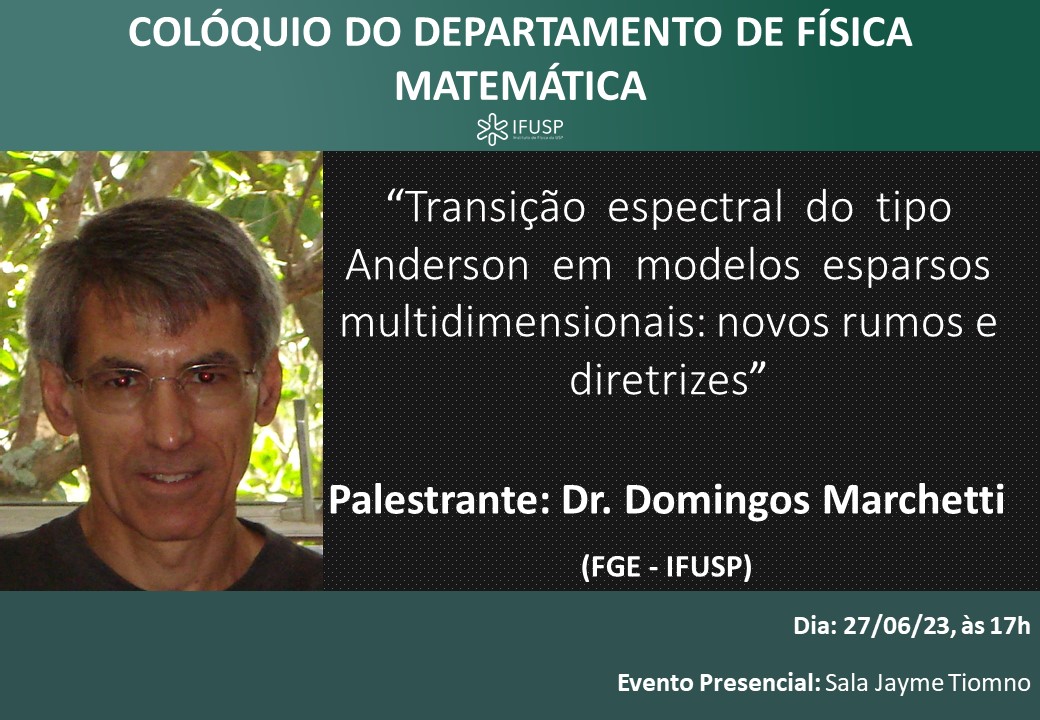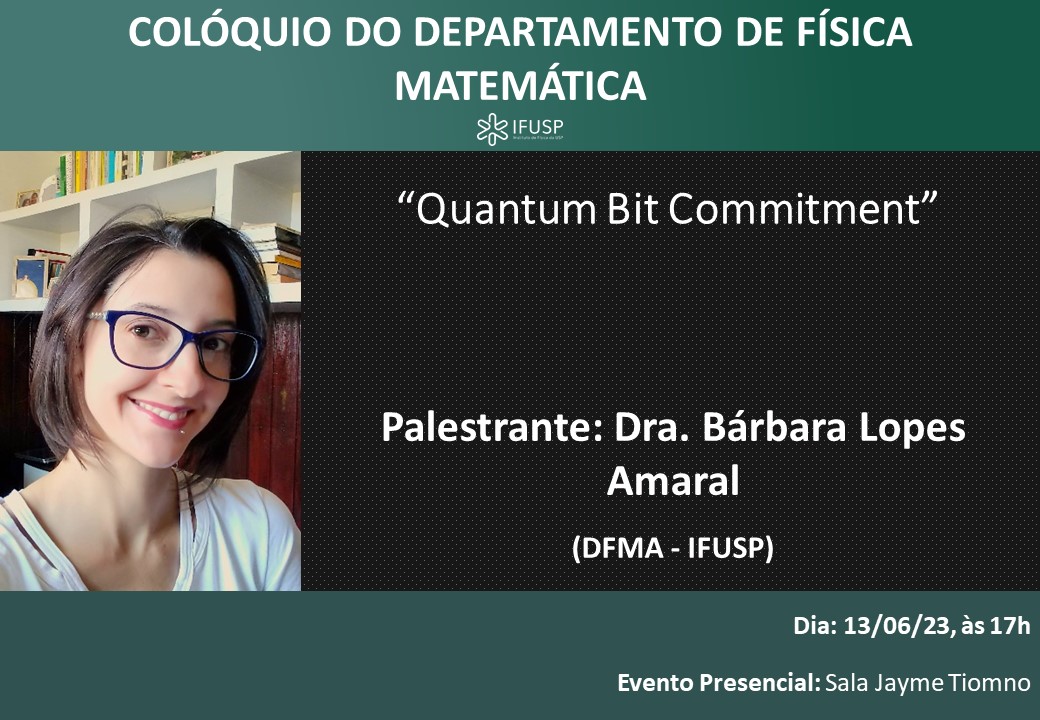"Transição espectral do tipo Anderson em modelos esparsos multidimensionais: novos rumos e diretrizes | Colóquio DFMA"

Resumo: Proposto por Anderson em 1959 para descrever a mobilidade de elétrons em uma rede cristalina na presença de impurezas (contexto Físico: semicondutores, por exemplo, Si dopados com P), o modelo de Anderson é descrito por uma Hamiltoniana Hω = ∆ + V ω em l2 (Zd) onde ∆ é o Laplaciano discreto e V ω é um potencial aleatório (para cada sítio n, V ω (n) é uma variável aleatória independente e igualmente distribuída F(x) = µ ({ω : Vω (n) ≤ x}) com um parâmetro v que controla a desordem. Anderson conjecturou a existência de um valor crítico 0 < vc < ∞ tal que, para v ≥ vc o espectro de Hω é puro ponto (p.p.), µ quase certamente, e para v < vc a medida espectral de Hω contém duas componentes separadas pela chamada fronteira de mobilidade (“mobility edges”) λ±: se λ ∈ [λ−, λ+] o espectro de Hω é puramente absolutamente contínuo (a.c.) e puro ponto no complemento, trazendo à Física dos materiais o importante e novo fenômeno de localização. Nossa atenção restringe-se aos últimos desenvolvimentos relativos a elusiva existência de espectro a.c., estabelecida em 1998 por A. Klein para o modelo de Anderson na rede de Bethe. Daremos nesta apresentação ênfase as ideias e resultados empregados na trabalho em colaboração com W. F. Wreszinski sobre uma transição do tipo Anderson em uma classe de modelos esparsos em d ≥ 2





